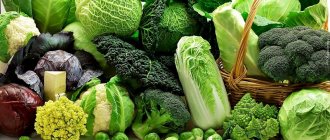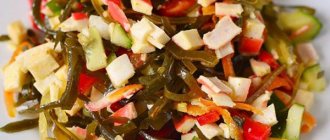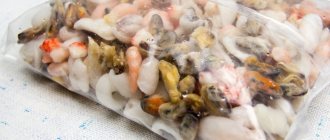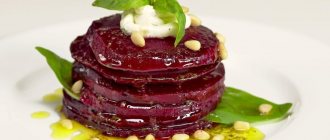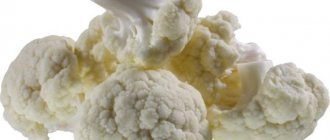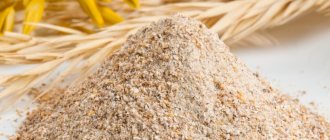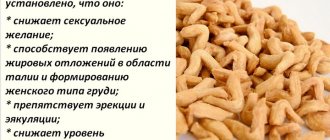What are the benefits of nori seaweed?
The name Nori is a collective term for the edible red algae Porphyra.
Although they have been used in Japanese cuisine since the tenth century, they have gained popularity and love in the West thanks to sushi and rolls. Analogs are also found in other Asian countries, such as in Korea under the name “Kim,” but the Japanese version has a more pronounced bitter-salty taste with subtle notes of iodine and sea. Production of the product is quite labor-intensive and consists of several stages:
- Collecting algae using a special harvester;
- Washing, crushing with special equipment and laying out in a thin layer on metal pallets or bamboo mats;
- Pressing and drying with a stream of hot air;
- When the sheets reach the required hardness, they are packaged in hermetically sealed packaging. If the product is not sold in dried form, but in paste form, then it is packaged in plastic containers.
On store shelves you can find different varieties of Nori seaweed:
- Class A, Gold, Silver - smooth, flexible, shiny sheets characterized by a dark green color with a golden tint. Suitable for making sushi, as they do not break when rolled;
- Class B, Red - sheets of a non-uniform brownish tint, subject to delamination when folded;
- Class C, Green - uneven dark green and brownish coloring, sheets break and crumble.
In addition, Nori seaweed is divided into:
- Nori-maki - rectangular or square-shaped sheets, one side of which is matte and the other glossy, used for making rice and sushi dishes;
- Awa-nori is a powder made from waste from the production of dried leaves, used as a seasoning for noodles, snacks, soups, sauces, side dishes and other dishes;
- Yaki-nori is the usual sheets that have undergone heat treatment, that is, frying, as a result of which the taste and aroma parameters become more expressive. Used for preparing broths and soups.
Dried leaves have a wide range of properties that have a beneficial effect on the human body. Rich in dietary insoluble fiber, seaweed helps normalize intestinal function by supporting beneficial microflora. They effectively cleanse the intestines of food waste, waste and toxins that accumulate during the natural functioning of the body.
Nori seaweed prevents the proliferation of bacteria and viruses. The carrageenans and polysaccharides contained in the composition stop allergic reactions and have an antitumor effect, blocking the synthesis of cancer cells. The product is indispensable for the immune system; thanks to its high content of vitamins, it helps strengthen it. Prevention of various chronic diseases and deficiency of vitamins and microminerals with sea herbs is tasty and effective.
Are seaweed chips healthy?
The benefits and harms of any product are two sides of the same coin. “Sea” chips are no exception.
Among the risks, experts include the possible content of heavy metal salts and chemicals in algae, which plants can adsorb from sea water. Therefore, it is extremely important to find on the packaging of the finished product or raw materials information about the place where the collection took place. Manufacturers and retail chains that value their reputation, including Vkusville, will not hide this information in order to emphasize: kelp grew in that part of the ocean that is not polluted by industrial production.
Doctors do not advise getting carried away with chips if a person is diagnosed with:
- haemorrhoids;
- tuberculosis;
- dermatitis, psoriasis, eczema and other skin diseases;
- kidney diseases;
- chronic rhinitis;
- acute forms of gastrointestinal disorders;
- allergy to iodine.
In the absence of contraindications and the environmental safety of the raw material, kelp and its analogues are useful in any form. Algae enriched:
- iodine;
- proteins;
- vitamin C;
- phytohormones.
The beneficial effect is:
- in maintaining the functioning of the thyroid gland;
- in the prevention of iodine deficiency (one package of chips covers a person’s daily need for this element);
- in preventing the formation of free radicals;
- in inhibiting the growth of cancer cells;
- in improving brain function;
- in stabilizing the activity of the gastrointestinal tract;
- in normalizing blood pressure.
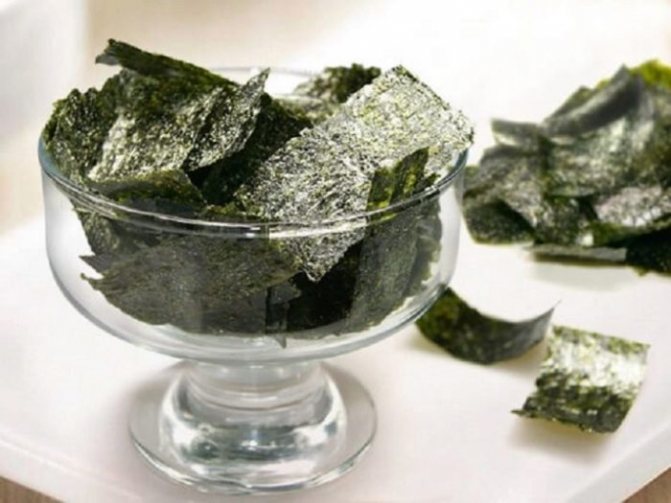
Reviews from buyers of chips are divided according to taste preferences, but many note the benefits for their figure and general well-being.
Important! If you are hypersensitive to iodine, you should opt for chips made from brown varieties of sea plants.
Properties of Nori Chips
Nutritional information | Vitamins | Minerals
How much does Nori Chips cost (average price for 1 pack)?
Moscow and Moscow region.
100 rub.
Nori chips are considered a very popular snack in Asia and have become increasingly popular in other countries around the world in recent years. In general, nori chips are made from asakusa nori seaweed, which belongs to the genus Porphyra, which is pressed and dried.
Paper-thin nori chips are dark brown in color with shades ranging from green to almost black. By the way, the color of nori chips is considered an indicator of the quality of this product. Thus, dark shiny nori chips are much tastier than the cheaper reddish nori counterpart. When dried, nori seaweed is mostly blue-black in color, while toasted nori chips are characterized by a greenish tint.
Before making nori chips, the seaweed is traditionally dried in the sun, spread on wooden or bamboo frames. Original (without specific additives) nori chips have a light smoky taste, but the undoubted advantage of this product is the natural “ocean aroma” of the prepared seaweed.
Nori chips are sold in sealed bags, packed in several pieces, and then packaged in convenient containers with a lid. A clear advantage of such nori chips is that the product can be stored for quite a long time, so use it gradually.
Nori chips contain not only the seaweed itself, but also such flavoring additives as sugar, soy sauce (made from water, soybeans, wheat, salt and sugar), as well as a variety of spices. Moreover, the distinctive taste of nori chips directly depends on the aromatic substances used: mushroom, spicy, original, tomato, sesame, wasabi, green tea.
It is noteworthy that previously in Japan only dried nori could be purchased - the plates had to be fried immediately before serving. Today, nori chips are on sale all over the world, already fried and ready to eat as a snack or as an addition to a variety of dishes.
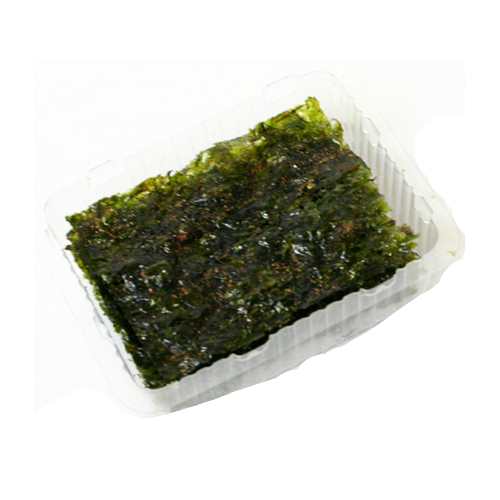
One cannot fail to mention the beneficial properties of both seaweed and nori chips in particular. It has been proven that nori chips seasoned with hot spices can remove toxic substances from the human body. In addition, they help improve digestion, stimulate appetite, kill intestinal parasites, lower blood pressure, and also help cleanse the sweat glands.
In addition, nori chips are rich in protein, minerals, and some vitamins. This product is a source of biologically active compounds: chlorophyll derivatives, polyunsaturated fatty acids, fucoidans, polysaccharides and many others.
Tips and how to use it correctly
The chips arrive on the counter ready to eat. Typically, they are prepared by frying in olive, sesame or soybean oil. The result is a tasty, but high-calorie product, and quite expensive.
You can make a healthy snack yourself. There are several options for making seaweed chips.
To make nori chips at home you will need:
- Dried nori sheets.
- Sea salt.
- Vegetable oil.
- Spices to taste.
Nori sheets are cut into pieces of a convenient size for consumption. Sprinkle a baking sheet with oil, place pieces of nori on it and place in an oven preheated to 150ºC. During heat treatment for 10-15 minutes, nori chips change from dark to green. It is important not to let the product burn, otherwise a bitter taste will appear. Hot green crispy pieces of nori are sprinkled with spices and sea salt.
Prepare seaweed chips with filling . Ingredients - seaweed, carrots or beets to fill and soften the taste, sea salt, spices, nuts or sunflower seeds.
- Everything is mixed in a blender.
- The resulting mass is distributed on a sheet of paper sprinkled with oil.
- Bake the snacks in the oven over low heat. Finished products easily come off the paper.
- Break the baked sheets into pieces. The chips are ready.
The chips, prepared with a minimum amount of oil, are low-calorie, which is important for people who want to lose weight.
You can store homemade snacks for a week in an airtight container.
This is a great snack option on the road, on a picnic. Can be consumed with different drinks : tea, coffee, beer.
Nori chips can be added to first and second courses. You can use them to prepare original, tasty, and most importantly, healthy salads.
Composition and calorie content
The benefit of the product lies in its special chemical composition, which is close to the structure of human blood. Algae are rich in calcium, copper, iron, magnesium, manganese, phosphorus, potassium, selenium, zinc and more. Consumption of the product is especially useful for people suffering from thyroid diseases and problems with hair, nails and skin.
Nori seaweed contains a complete table of vitamins of different groups, namely A, B, C, D, E, K. The complex of microelements includes polyphenols, carotenoids, flavonoids, alkaloids, amino acids, chlorophyll, protein, folic acid and much more. It is difficult to find an analogue of this product in terms of benefits for the body, so a balanced healthy diet must regularly include this type of seafood.
The low calorie content of algae allows you to use them to saturate the body with essential vitamins and minerals during weight loss diets. The nutritional value is only 35 calories/100 g, but sea grass contains 5.8 g protein, 0.3 g fat, 5.1 g carbohydrates, 0.5 g glucose and 0.3 g fiber. But there is no cholesterol and trans fats, which are harmful to the body.
Contraindications and harm
There is no need to experiment with a new product by immediately introducing it into the diet in large quantities.
Have you tried seaweed wrap?
Since each body absorbs nutrients differently, there are known cases of individual intolerance to Nori algae. You should be careful when consuming sea grass:
- Pregnant or breastfeeding women;
- For diseases of the gastrointestinal tract;
- Thyroid dysfunction leading to iodine intolerance;
- If you are prone to allergic reactions, bronchial asthma, eczema, psoriasis.
It is recommended to strictly control the consumption of seaweed, since the intestinal microflora of Asians and Europeans is very different. Consumption in large quantities will certainly lead to stomach upsets. It should be introduced into the diet carefully in small portions and then the body will not be harmed, but will only receive a lot of useful microminerals and vitamins.
Harm of nori seaweed and contraindications
Nori seaweed can cause harm if an individual intolerance to the product is detected. It is strictly contraindicated for pregnant women to consume this sea plant. Do not overuse the product, as this can lead to problems due to excess iodine.
What don’t our housewives use to make chips and other beer snacks these days? Of course, everyone (and I’m no exception) has their own signature dishes, which you make almost with your eyes closed. But it always seems that “this recipe” will be great, you should definitely try it too. As a result, you like some options more, some less... You take some notes and add them to your collection of permanent recipes. One of these beer snack options for me was nori chips. They do it very simply and extremely quickly. And they create variety on the table and delight with interesting tastes.
First, take out the sheets of nori. I bought them a long time ago, but they are used very sparingly. So there is enough of this stuff in the refrigerator.
Place the sheets of nori on a baking sheet in a single layer. There is no need to grease the baking sheet with oil - they won’t stick anyway. Leaves should be placed with the grooved side down.
Grease the shiny side of the nori with vegetable oil. For this, it is best to use a scented oil. Sesame oil works great, but I didn’t have any, I used olive oil. There is no need to lubricate too much - it is enough that the entire surface is coated with a thin layer of oil.
We add salt to each sheet of nori. You can also sprinkle some spices, but I didn’t - this seaweed already has a fairly bright taste without any additional notes. Place a baking sheet with sheets of nori in an oven preheated to 180 degrees, bake just nothing - 3 minutes is enough. We take the nori leaves out of the oven, place them on a plate and cut them into small pieces with ordinary kitchen scissors.
You can find ready-made nori seaweed chips on sale; they are very tasty, but quite expensive. At the same time, it is absolutely not difficult to make such chips yourself. This is a matter of literally a few minutes, the cost is several times less, and you can experiment with tastes.
A very simple recipe for Japanese nori chips step by step with photos. Easy to prepare at home in 10 minutes. Contains only 123 kilocalories. Author's recipe for Japanese cuisine.
- Preparation time: 8 minutes
- Cooking time: 10 min
- Calorie count: 123 kilocalories
- Servings: 2 servings
- Difficulty: Very simple recipe
- National cuisine: Japanese cuisine
- Type of dish: Appetizers, Fish and seafood
How to cook properly
Seaweed is ideal for people who follow a normal diet and consume meat, as well as for vegetarians or vegans.
To ensure that the benefits of Nori seaweed are maintained during cooking, you need to know how to properly prepare it and combine it with other ingredients. Dry pressed sea grass is better known and in demand for making sushi, rolls, and onigiri, but it can be safely added to other traditional dishes.
For example, it can be a good substitute for spinach in a salad, and when chopped it can be added to soups, sauces or stews. However, it should be remembered that heat treatment destroys most vitamins. It is best to add it raw immediately before eating or in dishes that do not require cooking, frying, or stewing.
Seaweed goes well with rice, lettuce, avocado, and many vegetables familiar to the Russian diet, as well as tofu cheese. They can also be eaten as a separate dish on their own - chips.
Recipe for Japanese food lovers
Knead a little rice in your hands and give it the desired shape. Typically, onigiri are triangular or round. You need to make a small depression in the middle and put the filling there. Absolutely any filling can be chosen. It can be the same seaweed, fish, shrimp, or just cream cheese. Cover the hole with another portion of rice and then wrap it in nori. Nori seaweed is used here mainly to make the dish more convenient to eat. After all, holding rice with your hands is not very comfortable.

Content
Recipes with Nori
There are many recipes with photos where Nori is a required ingredient and which can be easily prepared at home. Most of them are variations on the theme of rolls and sushi, but other dishes that can be prepared every day for the whole family will be presented here.
- Adyghe cheese500 gr
- Nori100 gr
- Soy sauce4 tbsp
- Vegetable oil 1 tbsp
- Flour4 tbsp
- Kefir ml
- Salt tsp
- Sugar h/l
- Spices to taste
Calories:785 kcal
Proteins: 166 g
Fat:102.8 g
Carbohydrates:138.7 g
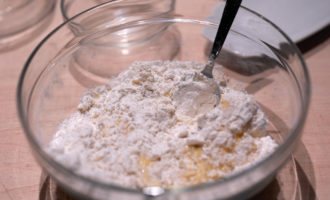
First you need to prepare the batter. Water is mixed with kefir, flour, salt, sugar, soda and spices are added, stirring gently. The resulting dough should be the consistency of sour cream, homogeneous without lumps.
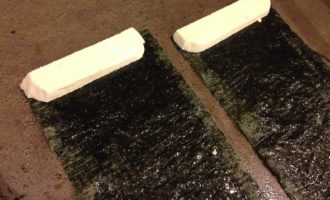
The cheese is cut into cubes 0.5 cm thick and wrapped in Nori sheets.
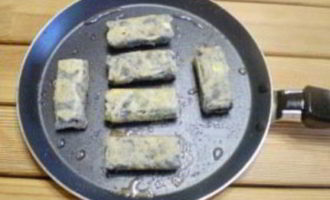
The cubes need to be dipped in batter and placed on a heated frying pan. Fry in olive or sunflower oil for 1-2 minutes until golden brown.
The dish is prepared extremely quickly and is perfect for unexpected visits from guests. Can be served hot or cold.
To prepare we will need:
- Salmon – 300 g;
- Rice – 500 g;
- Cucumbers – 300 g;
- Nori – 2 years;
- Cream cheese – 200 g;
- Rice vinegar – 3 tbsp;
- Sugar – 1 tsp;
To ensure that the cake has beautiful, smooth edges, it is best to assemble it in a special form. Cover the bottom with cling film and lay out thinly sliced salmon. Spread cheese and thinly sliced cucumber on top in an equal layer. Dissolve sugar and finely chopped Nori in vinegar, and carefully place the mixture on the cucumbers.
Nori soup with saury
- Canned saury – 1 can;
- Nori – 2 sheets;
- Egg – 2 pcs.;
- Potatoes – 300 g;
- Onion – 1 pc.;
- Carrots – 1 piece;
- Vegetable oil – 1 tsp;
- Salt to taste.
Peeled potatoes are cut into small cubes and cooked over medium heat for 15 minutes. Finely chopped onions and grated carrots are sauteed in a frying pan in vegetable oil and added to the pan with potatoes. The fish is well kneaded in a jar along with the juice and added to the pan. Whipped eggs are added to thicken the soup and poured in in a thin stream, stirring constantly.
- Sea kale in a jar

